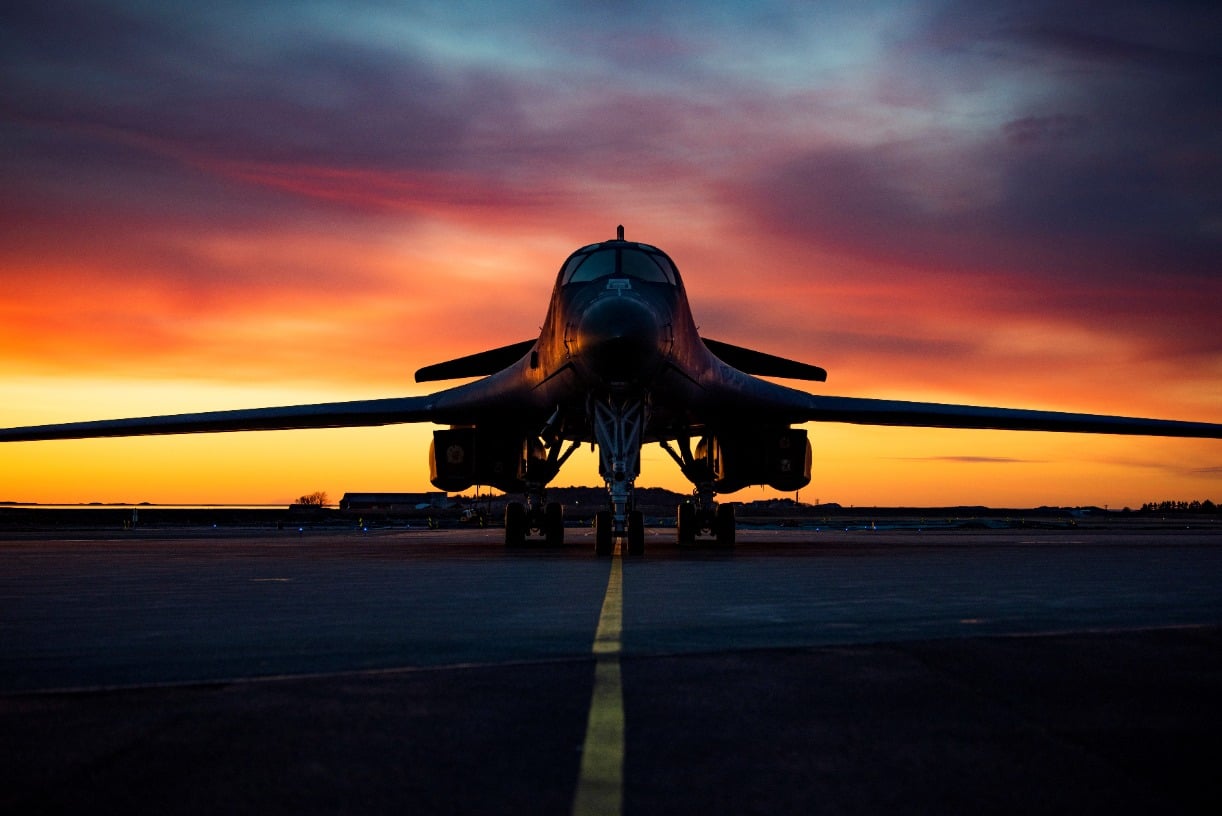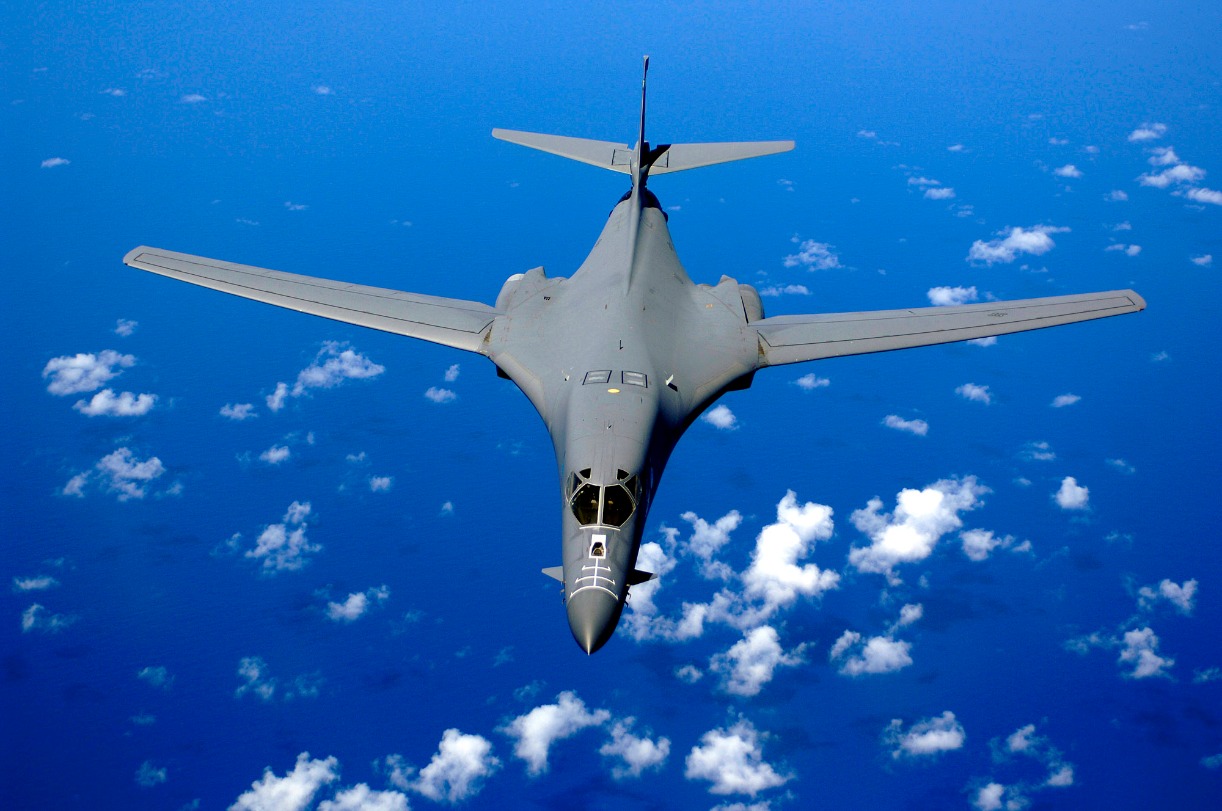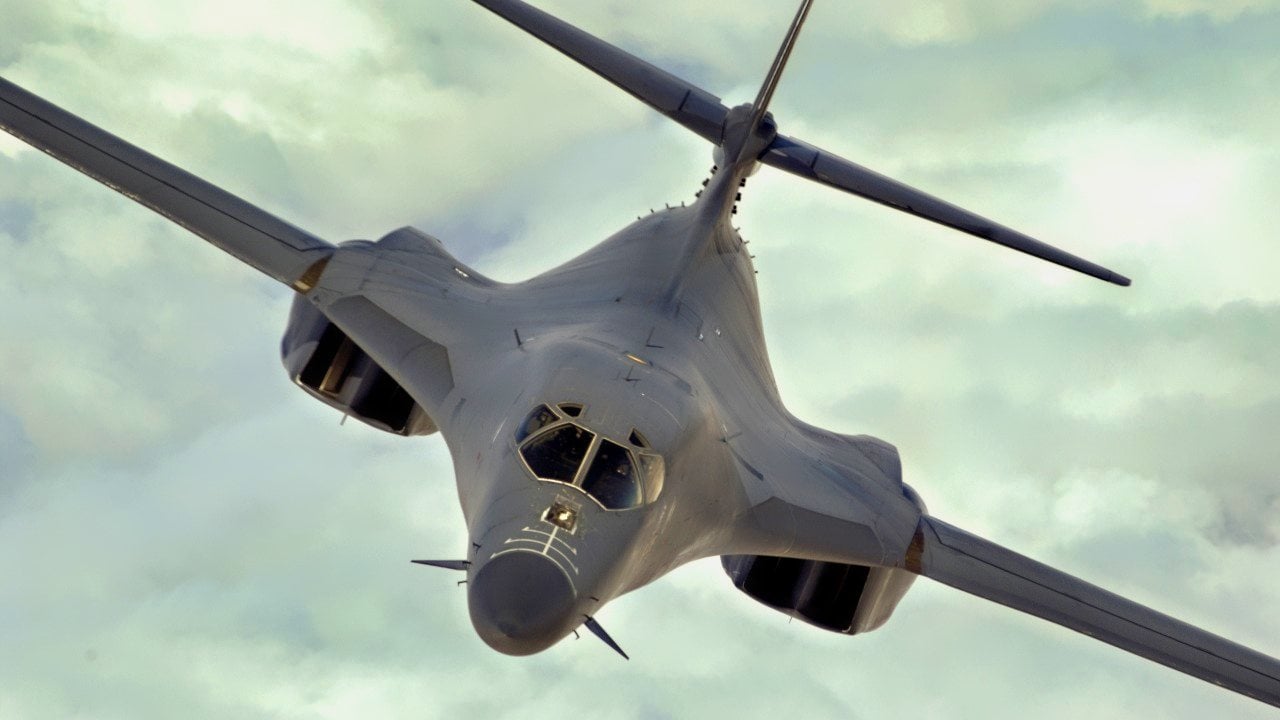B-1B Lancer Bomber Can Be Explained in 2 Words
The B-1B Lancer, initially designed during the Cold War for nuclear deterrence, became a vital asset in Afghanistan and Iraq, repurposed as a conventional bomber delivering devastating air support.
Greatest Ever? The B-1B Lancer, initially designed during the Cold War for nuclear deterrence, became a vital asset in Afghanistan and Iraq, repurposed as a conventional bomber delivering devastating air support.

-In Afghanistan, U.S. covert forces utilized satellite radios to call in Lancers, which provided continuous, precision close air support.
-One historic deployment saw the 7th Bomb Wing execute 500 troops-in-contact responses and 700 priority air requests, delivering 400 bombs on target. Modernization efforts, like the addition of GBU-54 Laser JDAM, further enhanced its capability.
Meet the B-1B Lancer: The Game-Changer in America's Longest War
The B-1B remains one of the most effective American bombers in the Global War on Terror.
The B-1B Lancer was the undisputed workhorse in the air war over Afghanistan.
From the first moments the CIA’s “Jawbreaker” paramilitary teams and U.S. special operations forces busted covertly into the notoriously rough land and linked up with the indigenous tribes aligned against the Taliban and al Qaeda, the Americans conducted the first phase of the war with great alacrity.
A handful of covert warriors riding on horseback, embedded with the Northern Alliance, armed with Kalashnikovs, packing duffel bags of money to buy the loyalty of the locals, and sporting satellite radios, were the decisive element in knocking the Taliban out of Kabul and sending al Qaeda scattering for the hills. Those satellite radios were instrumental because they served as the lifeline between those handful of operators and the potent U.S. air power that blasted Taliban and al Qaeda formations in the field.

It was the B-1B Lancer that usually answered the call of those embedded operators, circling a battlefield and delivering death and destruction to the terrorists below. These were the halcyon days, when victory seemed assured in what would become America’s longest war. The negative turn in the failed war was still months away. And even then, the Lancer would define the air war for the country.
Not only were the Lancers highly devastating in Afghanistan, but they were used to great effect in Iraq as well. In fact, in 2008 the U.S. Air Force’s official website labeled the B-1B Lancer as one of the most important bombers in that war. The lessons learned from Afghanistan were quickly carried over to the War in Iraq in 2003, with the Lancers conducting an assortment of Close Air Support missions.
The Lancer’s Impressive Record
America’s B-1B Lancer was designed during the Cold War. It was to be a long-range bomber able to counter the Soviet long-range nuclear bombers of that era. When the USSR collapsed, the Lancer suffered through a bit of an identity crisis. That all changed, however, with the Global War on Terror.
Lancers were repurposed for carrying large amounts of conventional ordnance. They became bomb and missile trucks. These birds floated over a target and pummeled it mercilessly.
The longer the war in Afghanistan went on, the more the Lancers were used, with massive impact for Americans trying to keep the scourge of al Qaeda and the Taliban away from parts of the country they had liberated.

One notable instance during the War in Afghanistan occurred in 2011-2012. The Air Force’s Seventh Bomb Wing deployed to Afghanistan. As Military.com outlines, it was a “record-breaking” deployment for the B-1B. “The airmen of the 7th kept a bomber in the air over Afghanistan every moment of their deployment.” Continuing, “nine bombers, 400 airmen, and a whole litany of fun facts” erupted from that historic deployment.
Relatedly, the “airmen of the 9th Expeditionary Bomb Squadron and 9th Expeditionary Aircraft Maintenance Unit provided more than 25 percent of the total fixed-wing close-air support coverage for coalition ground forces in Afghanistan every day by launching the most B-1 sorties executed on a single deployment” in the first decade of the war, according to Military.com.
Some key points the Air Force highlighted at the time were that across the six-month-plus deployment, the group responded to “more than 500 troops-in-contact situations, with the enemy as close as 300 meters from friendly forces, and another 700 priority air requests, delivering more than 400 weapons on target.”

Some Serious Upgrades
During this time, the Air Force completed significant modernizations to the B-1B Lancer. The Lancers would deploy the GBU-54 Laser Joint Direct Attack Munition, allowing for the Forces Air Component Commander to engage and destroy moving targets with the Lancer for the first time ever. The Lancers expanded their footprint both in Afghanistan and Iraq and enjoyed a high success rate.
The B-1B Lancer is possibly the greatest American warplane in the Afghanistan War – and quite possibly in Iraq, too. That’s quite a record, if you ask me.
Author Experience and Expertise: Brandon J. Weichert
Brandon J. Weichert, a National Interest national security analyst, is a former Congressional staffer and geopolitical analyst who is a contributor at The Washington Times, the Asia Times, and The-Pipeline. He is the author of Winning Space: How America Remains a Superpower, Biohacked: China’s Race to Control Life, and The Shadow War: Iran’s Quest for Supremacy. His next book, A Disaster of Our Own Making: How the West Lost Ukraine, is due October 22 from Encounter Books. Weichert can be followed via Twitter @WeTheBrandon.
All images are Creative Commons or Shutterstock. All photos are of various submarine styles.
From the Vault
Russia Freaked Out: Why the U.S. Navy 'Unretired' the Iowa-Class Battleships
Battleship vs. Battlecruiser: Iowa-Class vs. Russia's Kirov-Class (Who Wins?)


